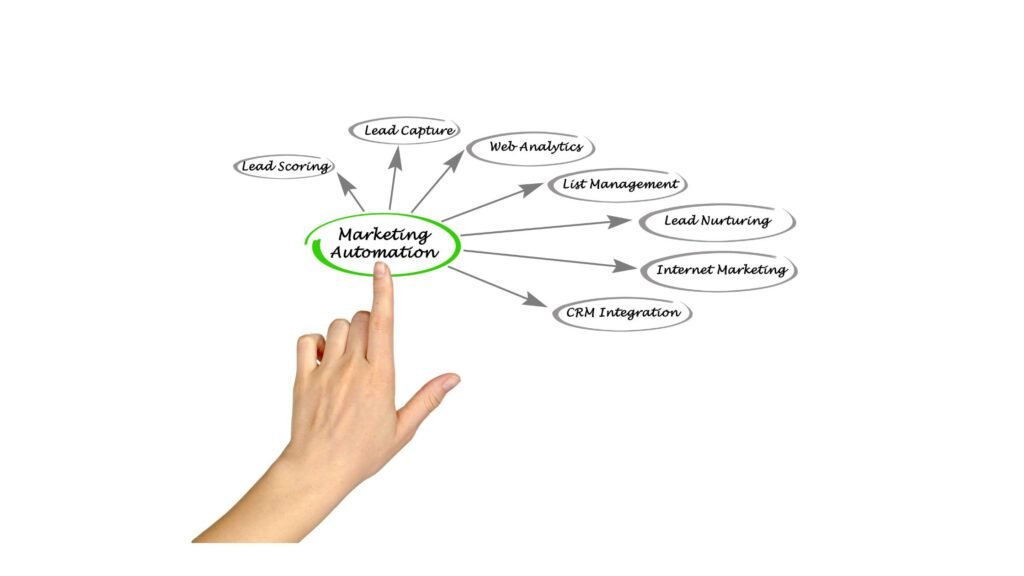
In the fast-paced landscape of digital marketing evolution, businesses are continually searching for innovative strategies to reach and engage their target audience. A strategy that has garnered considerable attention is the capability to monitor users’ activities across the internet. By leveraging advanced tracking techniques, businesses can gain a valuable understanding of user behavior, preferences, and interests, empowering enterprises to execute personalized and targeted marketing campaigns.
But what is the digital marketing strategy that tracks users across the web? How does it work, and what benefits does it offer businesses? In this blog post, we will delve into the intricacies of this strategy, exploring its key components, best practices, and the impact it can have on your marketing efforts.
So, if you’re eager to unlock the potential of tracking users across the web to enhance your digital marketing strategy, keep reading to discover the answers you’ve been seeking.
Definition Of Digital Marketing
Digital marketing uses channels, platforms, and technologies to promote, advertise, and engage with audiences to achieve specific marketing objectives. It covers various online endeavors and strategies to reach and influence target audiences through digital mediums.
Digital marketing utilizes the internet and electronic devices such as computers, smartphones, tablets, and social media platforms to engage potential customers and foster business expansion. Common elements of digital marketing encompass SEO, content marketing, social media marketing, email marketing, pay-per-click (PPC) advertising, and other strategies.
Importance Of Digital Marketing For Website Owners

Digital marketing is precious for website owners for several reasons:
a. Increased Visibility: Digital marketing techniques like SEO and paid advertising can improve a website’s visibility in search engine results pages (SERPs). This increased visibility means more potential visitors will discover and access the website.
b. Targeted Traffic: Digital marketing allows website owners to target a particular audience according to demographic factors, interests, behavior, and location. This targeted approach can result in higher-quality traffic with an increased probability of turning into customers or taking desired actions on the website.
c. Cost-Effective: Digital marketing is often more cost effective than traditional marketing channels. Website owners can allocate their budgets efficiently and measure the ROI of their campaigns, ensuring they get the most value for their investment.
d. Data-Driven Insights: Digital marketing provides access to extensive data and analytics tools. Website owners can acquire an understanding of user behavior, preferences, and conversion paths. This data aids in making informed decisions for optimizing the website and marketing strategies.
e. Brand Building: Through social media marketing, content marketing, and other digital tactics, website owners can build and strengthen their brand presence online. Consistent and engaging digital marketing efforts can enhance brand recognition and reputation.
f. Competitive Advantage: A solid online presence is essential for remaining competitive in today’s digital landscape. Website owners who effectively use digital marketing can gain a competitive edge, especially in industries where online visibility and customer engagement are crucial.
What Is The Digital Marketing Strategy That Tracks Users Across The Web?
The digital marketing approach that monitors users throughout the internet is called “cross-device tracking” or “cross-channel tracking.” This strategy involves using various technologies and methods to observe and gather data regarding user behavior as they interact with different digital platforms and devices. The goal is to create a cohesive and personalized user experience by understanding their preferences, interests, and online activities.
Here are some key components and techniques associated with this strategy:
Retargeting
Using cookies to track users across the web forms the basis of retargeting strategies. This method involves presenting targeted advertisements to individuals who have previously interacted with a specific website or application.
Monitoring users’ past interactions facilitates the delivery of content and ads more relevant to their interests and preferences. This personalized approach enhances the likelihood of engaging users who have already shown interest, contributing to a more effective and tailored digital marketing strategy.
Cookies and Pixels
Cookies, small data pieces stored on users’ devices, and pixels, tiny invisible images embedded on web pages, play crucial roles in tracking user interactions across the internet. Cookies and pixels are instrumental in identifying users as they navigate various websites, providing valuable data for marketers.
These tools aid in understanding user behavior and preferences, allowing for a more comprehensive view of their online activities. While cookies store information locally, pixels assist in collecting data that contributes to creating a cohesive and detailed user profile, forming the foundation for targeted advertising and personalized content delivery.
Email Tracking
In the realm of email marketing, the tracking of user interactions is pivotal for optimizing campaign effectiveness. Analyzing user behaviors, such as open and click-through rates, offers insights into the level of engagement with email content.
This information is valuable for tailoring subsequent email campaigns to align with individual preferences. By leveraging email tracking, marketers can refine their strategies, delivering content that resonates with recipients and increasing the overall success of their email marketing initiatives.
Data management platforms (DMPs)
Data management platforms (DMPs) play a vital role in gathering and structuring data from diverse sources. These platforms aggregate data to create comprehensive user profiles, offering a holistic understanding of individual preferences and behaviors.
DMPs enable marketers to leverage this rich data to deliver targeted advertisements and content. Creating a unified view of users across channels contributes to the precision and effectiveness of digital marketing efforts.
Customer relationship management (CRM) systems
These are instrumental in tracking and managing customer interactions across multiple channels. These systems facilitate customer data organization, enabling businesses to create personalized communication strategies and marketing campaigns.
By maintaining a centralized repository of customer information, CRM systems empower marketers to tailor their approaches based on individual preferences and past interactions. This personalized communication fosters stronger customer relationships and enhances the overall effectiveness of marketing initiatives.
Lookalike audience targeting
Lookalike audience targeting is a sophisticated digital marketing strategy that relies on identifying and targeting users who share similarities with an existing audience based on tracked data. This approach involves leveraging the characteristics and behaviors of a known audience to identify potential customers who are likely interested in comparable products or services.
By expanding the reach to users with similar traits, lookalike audience targeting enhances the efficiency of digital advertising campaigns. This strategy capitalizes on the understanding gained from tracked data to connect with new prospects who share commonalities with a brand’s existing customer base, ultimately driving more targeted and successful marketing efforts.
Attribution modeling
In the digital marketing landscape, attribution modeling emerges as a strategic technique aimed at crediting various marketing channels based on user actions. This method is a valuable tool for businesses seeking insights into the contribution of different channels and touchpoints toward conversions or desired outcomes.
By employing attribution modeling, organizations can discern the effectiveness of each element in their marketing strategy, providing a comprehensive understanding of the customer journey. This knowledge, in turn, empowers businesses to make informed decisions regarding allocating resources and optimizing marketing efforts.
Privacy concerns
Addressing privacy concerns is a pivotal aspect of ethical data practices in digital marketing. It underscores the importance of obtaining user consent when collecting and utilizing personal data. Businesses must prioritize respecting individuals’ privacy rights and fostering trust by transparently communicating how their data will be used.
By embracing ethical considerations and adhering to privacy regulations, organizations can build and maintain positive relationships with their audience, reinforcing the integrity of their marketing practices.
Cross-Channel Attribution
Cross-channel attribution plays a crucial role in understanding and assigning value to each touchpoint throughout the customer journey. This approach enables businesses to identify the most impactful channels and interactions contributing significantly to conversions.
Organizations can optimize their marketing spending and strategies by analyzing the data gathered through cross-channel attribution. This nuanced understanding of the customer journey allows for a more targeted and efficient approach, ensuring resources are allocated where they generate the most value and impact.
The Importance Of Tracking Users
Understanding the significance of tracking users across the web is the first step toward implementing an effective digital marketing strategy. Here, we will discuss why tracking users is crucial.
- Personalization
Personalization is at the heart of modern marketing. When you can track a user’s behavior and preferences, you can deliver content and advertisements tailored to their interests. This not only increases engagement but also enhances the user experience.
- Targeted Advertising
Tracking users allows marketers to create highly targeted advertising campaigns. By analyzing user data, businesses can identify their ideal customers and show ads that are more likely to convert.
- Data-Driven Decision Making
Effective tracking provides valuable insights into user behavior. Marketers can base their decisions on well-informed choices regarding their marketing strategies, content creation, and product development.
- Conversion Rate Optimization
Tracking user journeys on websites and apps enables businesses to identify bottlenecks and points of friction in the conversion process. By addressing these issues, companies can increase conversion rates and revenue.
- Enhanced Customer Support
Customer support teams can benefit from user tracking by gaining insights into user issues and needs. Tracking can help identify common pain points and improve support processes, improving customer satisfaction.
Tools And Techniques For Tracking Users
Marketers rely on various tools and techniques to implement the digital marketing strategy effectively. Here are some of the most important ones:
- Google Analytics

Google Analytics is a powerful web analytics tool enabling businesses to monitor website traffic, user behavior, and conversions. It furnishes comprehensive insights into user interactions with a website, making it a cornerstone of web tracking strategies.
- Facebook Pixel

For businesses running Facebook ads, the Facebook Pixel is indispensable. It tracks user interactions with your website after clicking on a Facebook ad, enabling you to measure the effectiveness of your ad campaigns.
- CRM Systems

Customer Relationship Management (CRM) platforms such as Salesforce and HubSpot help businesses track and manage customer interactions across multiple channels. They provide a centralized repository for customer data, making it easier to personalize marketing efforts.
- Email Marketing Platforms

Email marketing platforms like Mailchimp and Constant Contact offer tracking features that enable you to identify individuals who opened your email, clicked on links and made purchases. This data helps refine email campaigns.
- Marketing Automation

Marketing automation tools like Marketo and HubSpot Automation enable businesses to create personalized marketing journeys based on user behavior. Automation streamlines the process of delivering targeted content and advertisements.
Best Practices for Tracking Users Across The Web
Ensuring user privacy and adhering to legal and ethical guidelines are critical best practices when tracking users across the web. Additionally, regularly reviewing and optimizing tracking methods is essential for maintaining transparency and user trust while maximizing the effectiveness of your tracking efforts.
Here are some best practices for tracking users across the web:
Ensuring User Privacy And Consent
a. Obtain Explicit Consent: Always seek explicit user consent for tracking, especially when using cookies or collecting personally identifiable information (PII). Provide clear and easy-to-understand opt-in/opt-out mechanisms.
b. Transparency: Communicate your data collection practices, including what data is being collected, why it’s being Information should be transparently communicated regarding what data is gathered, its purpose, and how it will be utilized. Privacy policies must be readily available and written in clear, straightforward language.
c. Data Minimization: Collect only the necessary data for your intended purposes. Avoid over-collecting data, which can raise privacy concerns.
d. Anonymization: When possible, anonymize user data to protect individual identities. Aggregate data or use pseudonyms to reduce the risk of data breaches.
e. Compliance with Regulations: Ensure compliance with relevant Regulations governing data protection, like the General Data Protection Regulation (GDPR) in Europe or Legislation such as the California Consumer Privacy Act (CCPA) within the United States.
Adhering To Legal And Ethical Guidelines
a. Stay Informed: Keep up-to-date with the latest privacy regulations and industry standards related to user tracking. Laws and guidelines may change over time, so it’s essential to remain compliant.
b. Honor User Preferences: Respect users’ choices regarding tracking preferences. Facilitate a straightforward process for users to opt out of tracking if they choose to do so.
c. Age Restrictions: Ensure you are not tracking or collecting data from individuals below the legal age for consent, as relevant laws define.
d. Third-Party Compliance: If you use third-party tracking services or tools, ensure that these providers comply with privacy regulations and ethical guidelines.
Regularly Reviewing And Optimizing Tracking Methods
a. Data Security: Enforce strong data security measures to safeguard user data from breaches. Regularly audit and update security protocols to stay ahead of emerging threats.
b. Data Accuracy: Continuously assess the accuracy and quality of the data you collect. Remove or correct any inaccurate or outdated information.
c. Performance Optimization: Periodically review the performance of your tracking methods. Identify and address any issues impacting the user experience or data collection efficiency.
d. Testing and Experimentation: Experiment with different tracking methods and technologies to identify the most effective approaches for your specific goals. A/B testing can help optimize user tracking and marketing efforts.
e. User-Friendly Opt-Out: Make it easy for users with an easy option to opt out of tracking or customize their privacy settings. Provide clear instructions on how to do so.
f. Regular Auditing: Conduct regular audits of your tracking practices to ensure they are by your privacy policies and legal obligations. This can also help identify any potential areas for improvement.
FAQs
Q1. What Is The Role Of Digital Marketing Channels In Tracking Users Across The Web?
Channels for marketing, including social media, email marketing, and paid advertising, significantly track user interactions and behaviors across various online platforms. They help businesses gather data that can be used to create personalized marketing strategies.
Q2. How Does Marketing Search Engine Optimization SEO Contribute To User Tracking In Digital Marketing?
SEO marketing entails enhancing a website to achieve higher rankings in search engine results. It indirectly contributes to user tracking by increasing organic traffic, allowing businesses to monitor user behavior on their websites and make data-driven decisions.
Q3. How Can Businesses Ensure User Consent When Implementing User Tracking In Digital Marketing?
Obtaining user consent is crucial for ethical and legal user tracking. Businesses can implement precise opt-in/opt-out mechanisms and communicate their data collection practices transparently to users.
Conclusion
Understanding the digital marketing strategy that tracks users across the web is crucial for businesses looking to optimize their online presence. By implementing this strategy, companies can gain valuable insights into their target audience’s behavior, preferences, and purchase patterns.
With this knowledge, businesses can create personalized and implement focused marketing initiatives that increase conversion rates and return on investment (ROI), which is crucial. As the digital landscape continuously evolves, keeping abreast of the latest marketing techniques is essential for maintaining a competitive edge.
So, if you found this blog post informative, we encourage you to share your thoughts and insights by leaving a comment below. Let’s extend the dialogue and delve into the intriguing opportunities of digital marketing.








No Comments